April 14, 2025 | 23:02 GMT +7
April 14, 2025 | 23:02 GMT +7
Hotline: 0913.378.918
April 14, 2025 | 23:02 GMT +7
Hotline: 0913.378.918
It may be time to reassess the role that high-tech farming can play in Singapore’s ongoing quest for food security.
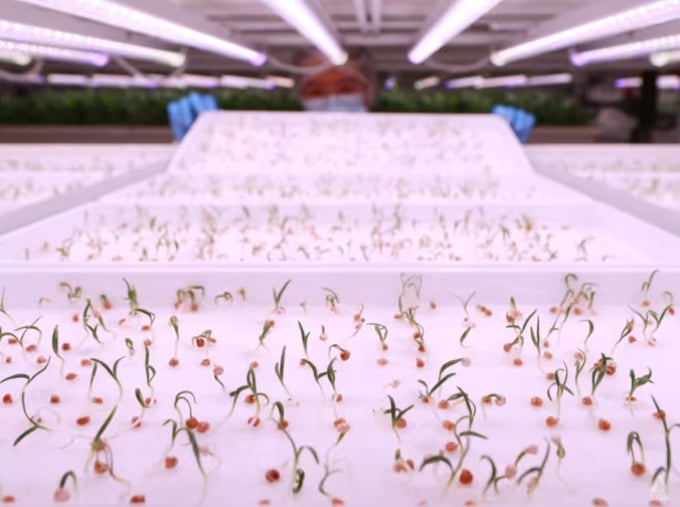
A grow room at Artisan Green's vertical farm, Oct 18, 2024.
These days, when wide-eyed entrepreneurs in Singapore approach agri-tech consultant Lionel Wong for help with starting their vertical vegetable farming business, his advice tends to be: “Don’t do it.”
Not that Mr Wong lacks passion for the business. The co-founder of Upgrown Farming has been in the agriculture industry for over a decade, years before the nation touted its ambitious “30-by-30” goal of producing 30 per cent of its nutritional needs by 2030.
In that time, he has seen his fair share of startups dive into the high-tech farming hype, only to drag themselves out of the soil with their pockets significantly lighter.
Without a large amount of capital, very few are able to come up with a business model that allows them to survive, Mr Wong believes.
He told CNA TODAY: “(High-tech) farming is not the devil here, it’s just a tool – and knowing how to use this tool is the responsibility of the business owner.”
In high-tech farming, science and technology are often integrated to replicate natural environments while optimising growth conditions, allowing farms to grow more food faster, better and with less.
It has been heralded as a key pillar in growing local produce in land-scarce Singapore.
However, despite millions of dollars allocated to various funds, grants and research and development (R&D) programmes to grow the nation’s nascent agricultural industry, it does not appear to have yielded the desired tangible output.
The proportion of locally grown vegetables and seafood has dropped for two consecutive years, with only hen shell egg production bucking the trend slightly.
Furthermore, clouds of doubt have gathered over once-promising developments in vertical farming — the system of cultivating crops in vertically stacked layers.
Local indoor farm I.F.F.I closed its mega 38,000 sqm facility in Tuas in April 2024. Shortly after, VertiVegies scrapped plans to construct its indoor farm in Lim Chu Kang. Sky Greens is also scaling down its operations, with many of its greenhouses reportedly torn down.
Worldwide, vertical farm startups with once-high valuations such as Agricool, Kalera and Aerofarms have also faced heavy losses and filed for bankruptcy, in part due to unsustainable business models. Venture capital investments into the agri-tech space have fallen by 60 per cent since late 2021.
In the aquaculture space, things have not gone swimmingly either for local firms.
Barramundi Group, which sold 9.5 per cent of locally produced fish in 2020, stopped stocking its three ocean-based farm sites with juvenile fish in June 2023 due to a deadly fish virus outbreak.
Compounding the bleak mood surrounding the local farming scene are reports that Singapore’s fourth egg farm, IFH, may be reconsidering the viability of setting up its operations here.
The Singapore Food Agency (SFA) said in response to CNA TODAY's queries that it has been working closely with IFH to help it set up the farm.
There was also recent news that developmental work for the Lim Chu Kang masterplan — an initiative to redevelop about 390 hectares of land there into a high-productivity agri-food zone — has been delayed.
But there are also bright sparks — businesses that have managed to succeed by either carving a niche for themselves or diversifying their revenue streams by going beyond just selling produce.
Mr Ray Poh, the founder of local indoor farm Artisan Green, for instance, said his firm consistently rolls out products with more demand than supply in the market, like baby spinach, leading to a sustainable business.
They have broken even on their vegetable farm and are in the midst of building a bigger one in Sungei Tengah which will be operational in 2025.
Nonetheless, such encouraging stories are few and far between, raising questions whether Singapore can create a viable high-tech agricultural sector that will help reduce its reliance on food imports.
As 2030 looms over the horizon, CNA TODAY looks at why it is difficult for agri-tech firms here to succeed, and the role that high-tech farming can play in Singapore’s ongoing quest for food security in the future.
One reason agri-tech consultant Mr Wong discourages those without industry knowledge from starting a farm here is that he knows how tough it is to make the economics work.
Only about 1 per cent of land is set aside for agricultural use in Singapore. In 2023, the island had a total of 254 licensed local food farms, comprising primarily hen shell egg (three), vegetable (115) and seafood farms (131).
As such, much of the nation’s focus has been on identifying alternative spaces to produce food and using creative technologies to increase farm productivity.
Singapore invested almost S$250 million in the industry in 2019, when the 30-by-30 goal was announced. Two years later, the SFA established a S$60 million Agri-Food Cluster Transformation (ACT) Fund to support the transformation of the agri-food sector.
The ACT Fund provides a co-funding quantum for the adoption of technology and advanced farming systems, and support to implement technology to make efficient use of resources such as water and energy.
But despite this and the number of land-based seafood and vegetable farms increasing slightly from 2022 to 2023, overall local production of seafood and vegetables decreased by 8 and 15 per cent respectively over the same time period.
Why such paltry returns despite the hefty investments?
Owners and operators of seafood and vegetable farms attributed it to a slew of challenges that both industries face.
CNA TODAY spoke to nine local farms which use some form of technology to improve their productivity, and almost half said that they are still looking to break even from their initial investments.
To begin with, operating costs in Singapore are higher compared with neighbouring countries due to expensive land leases, electricity and labour.
Vertical vegetable farms, for instance, require advanced equipment such as sensors and hydroponic set-ups and rely on energy-intensive systems such as artificial lighting and climate control.
“These hardware investments, combined with the need for highly skilled labour to manage and optimise the farms, make vertical farming a costly venture,” said Ms Eyleen Goh, the founder and director of SG Veg Farms.
As a result, farms here have had to keep their headcounts lean.
Ms Grace Lim, the co-founder and director of Urban Farming Partners Singapore, told CNA TODAY that she only hires three full-time employees to help run her indoor vertical farm, GroGrace, a 430 sqm warehouse in Penjuru, Jurong.
GroGrace, which opened in November 2022 and is capable of growing 32 different varieties of vegetables, uses patented Dutch technologies and rainwater to grow its crops, while also recycling the water used.
Even then, she said, the farm is still in the red.
For its part, the SFA enhanced the ACT Fund in 2020 to increase the co-funding quantum and make it available to a wider range of food types. It also introduced the Energy Efficiency Programme in 2023, offering farms co-funding to undergo energy efficiency audits and adopt more energy efficient technologies.
But with the exception of a 20 per cent cash advance for technology upscaling, such grants are paid on a reimbursement basis, which causes problems for farms without large amounts of capital on hand.
Some fish farms told CNA TODAY that they are seeking cash injections to stay afloat, but securing funding has not been easy in the past year due to a series of industry “red flags” that have been widely reported.
Dr Dirk Eichelberger, the chief executive of Singapore Aquaculture Technologies, pointed to Barramundi Group’s decision to stop farming in Singapore and focus instead on its operations in Brunei as an example.
“If the biggest player in your industry (Barramundi Group) applies for a moratorium — which means you have to refinance your company — it doesn’t inspire confidence in with investors,” he said. "The banks are not very keen to invest in aquaculture either, to put it mildly.”
Ultimately, the main problem that local farms face across the board is the lack of consumer demand.
With high operational costs and limited ability to scale, farms here are forced to price their produce higher than similar goods imported from overseas, and Singapore’s consumers do not seem to value local produce enough to pay a premium.
This is also of concern even for the local egg farming industry, which in 2023 already contributed more than 30 per cent to Singapore’s total egg consumption.
Mr Chew Zi Xuan, the general manager of Chew’s Agriculture, one of Singapore’s three egg farms, is unsure whether local farms can maintain that market share.
“Our concern is not about production, it’s whether the demand for locally produced eggs can be kept up,” he said.
Mr Chew noted that while his 20-hectare farm along Neo Tiew Road has the capability to produce a million eggs a day, they often produce only 85 to 90 per cent of that figure because they would not be able to sell all of their eggs otherwise.
In response to CNA TODAY's queries, SFA said it is working with the Singapore Agro-Food Enterprises Federation Limited (SAFEF) to increase demand for local produce.
"SAFEF has been partnering farmers, traders, and food processing companies to promote local produce and has also taken on the role of an industry level supply and demand aggregator to better match demand and supply," it said.
SFA added that locally grown vegetables and fish are now sold under the brand names “The Straits Fish” and “The SG Farmers’ Market” respectively at FairPrice supermarkets under a six-month trial, and that consumer response to these products "have been encouraging".
The chief executive of another local egg farm, N&N Agriculture, Mr Ma Chin Chew believes the government is doing their part to promote local produce, but also that "in the current economic situation, people care more about the price.”
Industry players pointed out that the overemphasis on technology for technology’s sake has contributed to the failure of some high-profile farming ventures here.
Several farmers cited Temasek-backed fish farmer Apollo Aquaculture’s move to build an eight-storey facility – which requires a high amount of energy to pump water upwards against the pull of gravity – as one of these poor technology-driven decisions.
Apollo was initially projected to produce 2,700 tonnes of fish a year, but went into judicial management back in February 2023. The Straits Times reported on Thursday that two companies have conditionally agreed to purchase its farming facility.
But Mr Poh of Artisan Green believes that the spate of farm closures is ultimately beneficial for the local agri-tech scene.
“Now, people are more aware that (food production) is not just a straightforward problem to solve and that there are intrinsic challenges that come with being in the food industry,” he said.
“This change in expectations will result in managing investors' goals and making sure farms are more focused on the actual operations instead of chasing technology for the sake of increasing (the company’s) valuation.”
Another thing that farmers would like: More understanding from the government.
One example of a shining light in high-tech farming here exists at the Tampines Round Market and Food Centre, where an unassuming grey shipping container sits, seemingly idle, a few feet away from the car park.
But it is, in fact, Singapore’s first urban fish farm in a container, dubbed “Our Fish Storey”, developed by local startup Aqualita Ecotechnology and supported by Temasek Foundation.
The container utilises a Recirculating Aquaculture System (RAS), a technology that reduces water wastage by recycling it, while simultaneously keeping water conditions controllable and preventing diseases for its fish.
Mr Goh Chin Heng, Aqualita’s director of technology, said this is perfect for land-scarce and expensive Singapore.
The 6m-by-2.5m container is capable of producing up to 700 kg of jade perch (around 1,000 fishes) at any time with a survival rate of more than 90 per cent – an extremely productive return for a small space.
The container was designed to be modular, such that it can be stacked up, and maintaining the farm takes up no more than half an hour each day. It also uses a mere 1.5 kilowatts of electricity per hour.
“To bake a cake with your household oven, in comparison, needs 3 kilowatts,” noted Mr Goh.
As part of a partnership with Tampines Town Council, the fish farm was first unveiled to the public in November 2023, and in June 2024, Aqualita sold about 100kg of jade perch at cost price to local fishmongers.
At a glance, Aqualita’s container farm appears to be a potentially commercially viable solution to Singapore’s seafood production – utilising technology to overcome land constraints, energy costs and the biosecurity concerns associated with traditional fish farms to bring fresh seafood to the market next door.
But even this success story faces its fair share of challenges. As Mr Goh explained, government agencies have a host of stringent regulations that farms have to abide by. While he views these strict rules as ultimately a good thing, adhering to them can be both time-consuming and costly.
For instance, one of the requirements for the Tampines project was to build a concrete base underneath the container farm, which Mr Goh said cost more than building the unit itself.
Such regulations drive up costs and inadvertently affect the price of fish sold, making it harder to compete with cheaper fish imports.
Nevertheless, Aqualita views itself more as a solution provider than a farm, and Mr Goh said that Our Fish Storey's container systems are seeing demand from overseas – proof that there is value in technologies developed here.
Ms Victoria Yoong, co-founder of the tech-enabled fish farm Atlas Aquaculture, believes in the government's emphasis on technology but noted that "high-tech" need not mean the most complicated, fancy-looking or expensive equipment.
For example, her two-hectare farm in Sungei Tengah, which began operations in 2020, uses their own “high tech, low energy” RAS that is fully sustainable and has zero discharge. Ms Yoong said the farm grows about seven types of seafood for commercial reasons, though it is able to grow a much larger variety.
“For us, tech is more engineering and understanding the science of water than gadgets that ‘automate’ things,” Ms Yoong said.
While the problems faced by high-tech farms here do not bode well for the sector, some industry players said it is unrealistic to expect Singapore to be an agri-tech powerhouse within a short span of time.
Others, like Dr Paul Teng, professor and adjunct senior fellow at Nanyang Technological University’s S. Rajaratnam School of International Studies, believe that Singapore should acknowledge its limitations and double down on its strategy of strengthening and diversifying its supply chain of food imports instead.
SFA said in response to queries that the nation's "key strategy" to enhance its food security is indeed import source diversification –Singapore has increased its food supply sources from 183 countries or regions in 2022 to 187 in 2023.
It added that it is committed to support the local agri-food sector to build its capability and capacity to produce food locally, which will mitigate the volatility and impact of global food supply chains.
Dr Farshad Shishehchian, the co-founder of Blue Aqua International, said that the nation’s nascent industry, coupled with its unique limitations in size and regulations, creates complex problems for farm owners.
For one thing, ordering supplies is more difficult here. “If I need a pump, a paddle wheel or an automatic feeder for my farm in Thailand, I can just walk to the market and get it. Here, it’s a headache to do so,” he said.
Despite this, business has been doing well, according to Dr Farshad.
The company, which was founded in 2009 and is headquartered in Singapore, currently owns four farms internationally, including one land-based “super intensive” shrimp farm in Singapore.
Dr Farshad said the company has also invested S$35 million in building the first RAS trout farm in the Asia Pacific – here in Lim Chu Kang – which is scheduled to be completed by mid-2025.
“Our (existing) farm in Singapore has been very profitable because we have a different approach and a different customer portfolio,” he said. “We value our shrimp at a much higher price point than the rest of the market because we produce quality shrimp.”
In September 2024, local agri-tech startups Sustenir Group and NextGen Farms announced that they were bought over in a US$20 million deal and merged by United Arab Emirates-based Future Food Foundry, in a move the companies said “aims to address urban food challenges that require economies of scale”.
Likewise, Sustenir’s chief executive Jack Moy said that they differentiate themselves from the rest of the market by focusing on high-demand premium crops like kale and spinach using targeted technology.
Sustenir currently produces between 200 and 300 tonnes of produce annually, but with the merger and construction of a new fully-automated farm factory in Sungei Tengah underway and expected to be completed by early 2025, Mr Moy said the firm would be able to produce up to 1,500 tonnes annually.
He added that they were targeting for their business to break-even by the end of the year.
But even among those who have not quite reaped the harvest, some strongly believe that the future of food sustainability will inevitably involve tech-enabled farms.
Ms Lim of GroGrace said that the consequences of climate change, water scarcity, degradation of soil and destruction of biodiversity, clearly indicate that open-field farming will not be sustainable in the long run.
That is why she is a huge advocate of indoor farming.
“Even if people say that it’s not practical or too expensive, we have no choice. We have to learn how to grow indoors now, because when you’re in the middle of a food crisis, it will be too late.”
On the aquaculture side, Dr Eichelberger of Singapore Aquaculture Technologies (SAT) shared similar views.
SAT, which was established since 2012, owns floating platforms off the eastern coast of Singapore that produce sea-farmed fish using closed containment tanks. It farms about 200 tonnes of fish in a year at present, but that number will soon scale up to about 750 tonnes, said Dr Eichelberger.
Like GroGrace, Dr Eichelberger said the firm is not “fully out of the woods” in terms of its bottom line, but added that it had managed to get an injection of funds in the past few months.
Though the chief executive acknowledged the difficulties in convincing potential investors, he remains steadfast in his belief that patience is required when it comes to food sustainability here.
“It’s a long-term vision; the world needs to be fed,” he said.
“The justification for all this technology (in farming) is that you become more productive at the end of it, and we think (technology) is the key to reach these productivity gains.
“Innovation might not be as fast as in other sectors, but you need the willingness to have a long-term approach. So that means sufficient funding when you’re developing those solutions.”
The consensus among those in the agri- and aquaculture scene is that the high-tech systems used can generate produce in a productive manner.
What is left, Mr Poh of Artisan Green said, is to “research and reduce the input costs and scalability of these techniques”.
He cited Singapore’s water story as an example that high-tech farming can emulate.
“Decades ago, desalination was deemed an impossible method due to its high cost. However, after years of research and development, it has now become a viable method to produce safe drinking water,” he said.
“In order to gain food resilience, we have to be a resilient nation to support and gather around innovative companies to steer them to success.”
(CNA)
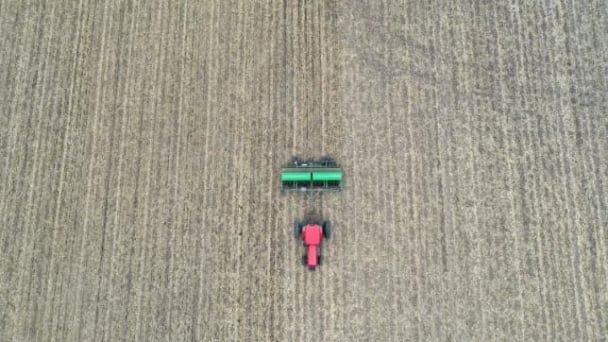
(VAN) Tariffs are making life more expensive for John Pihl. He's been farming in Northern Illinois for more than 50 years.

(VAN) European and American farmer organisations are concerned about the import tariffs that the United States introduced on 9 April for products from the European Union. This makes them 20% more expensive.
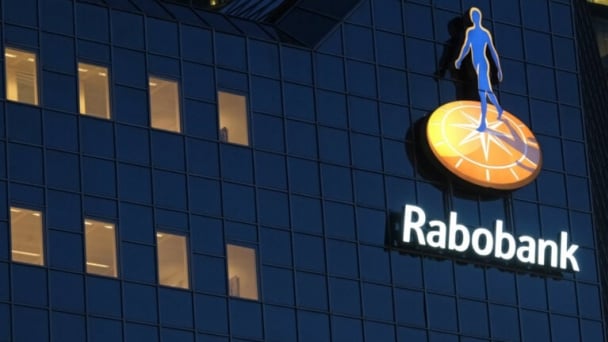
(VAN) Global poultry trade is expected to remain strong amid relatively tight global protein supply and growing consumption, RaboResearch concludes in its latest animal protein report.
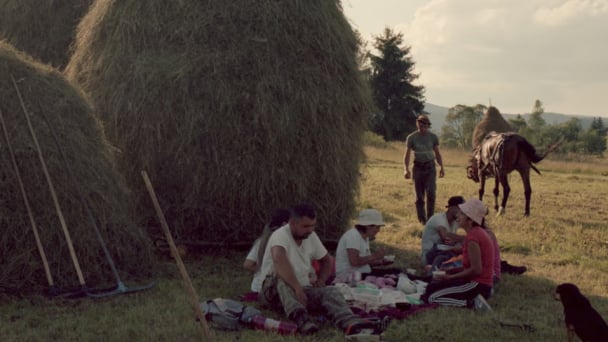
(VAN) Traditional methods benefit hundreds of species but as new agricultural techniques take over, the distinctive haystacks mark a vanishing way of life.

(VAN) The nation’s top banks are quietly advising their clients on how to build a financial life raft - or perhaps life yacht - from the wreckage of runaway climate change.
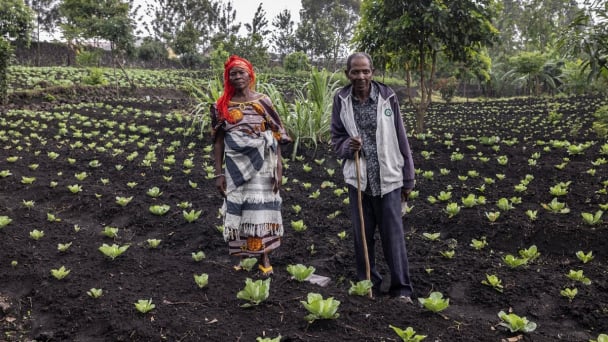
(VAN) From FAO Office in the Democratic Republic of the Congo.
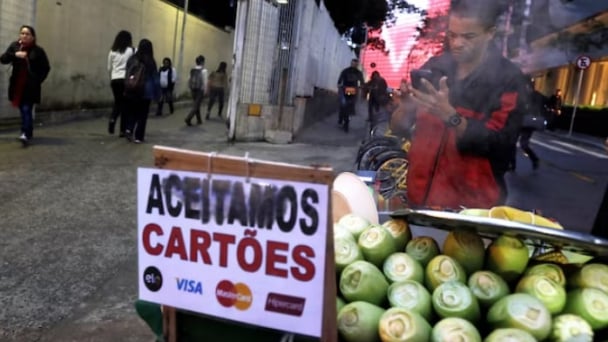
(VAN) Corn prices in the Campinas region have surged past 90 reais ($15.80) per 60-kg bag, the highest nominal level in nearly three years, marking a more than 23% jump year-to-date, according to the widely followed Cepea index from the University of Sao Paulo.